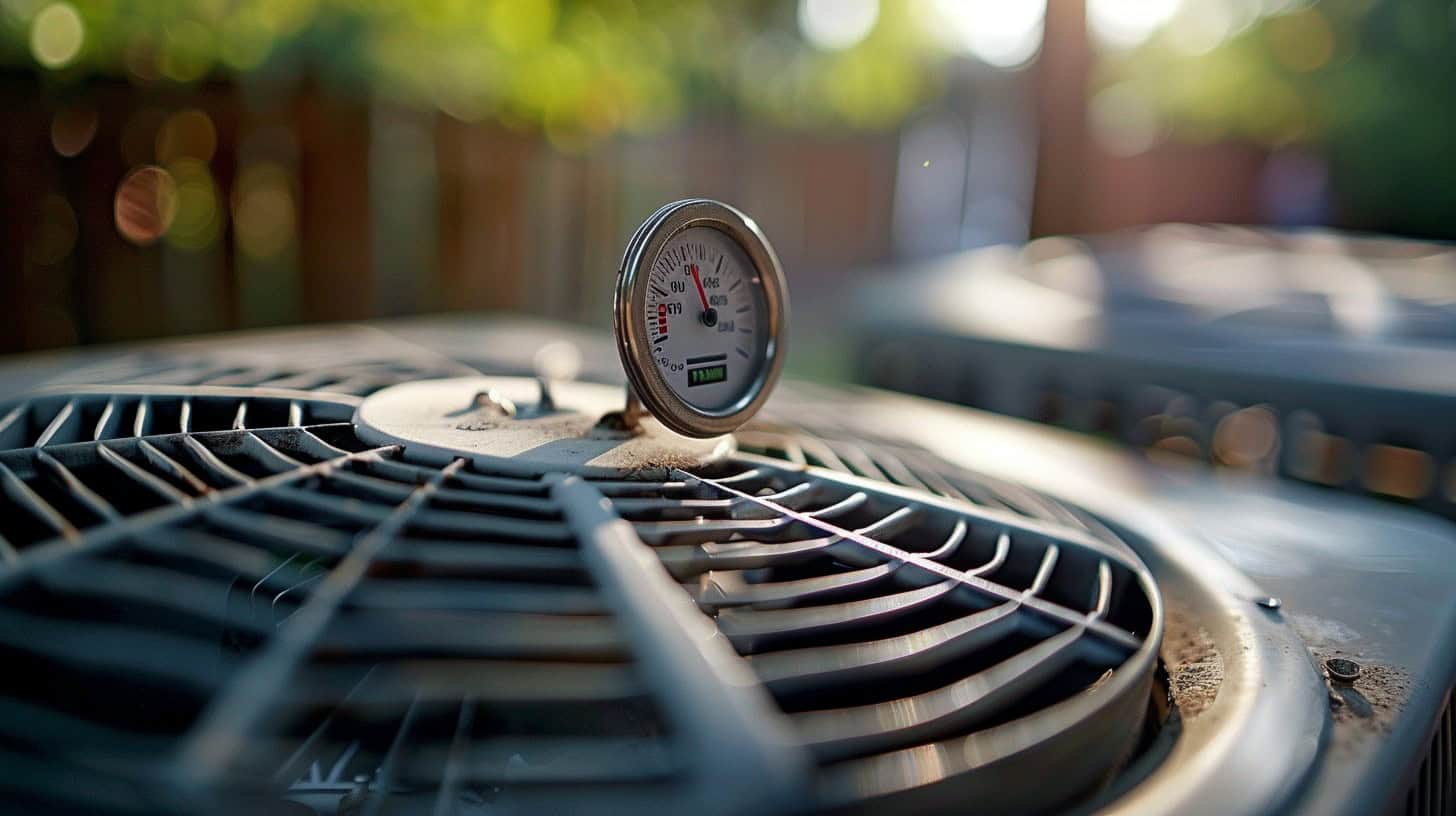Wondering if your home uses a heat pump to keep you warm or cool? One clear sign is looking for the model number on the outdoor compressor. This article will guide you through six ways to confirm if you have a heat pump, including checking special features and conducting physical inspections.
Get ready, knowledge awaits!
Key Takeaways
You can find if you have a heat pump by looking for a reversing valve in the outdoor unit, a sign it can switch between heating and cooling.
Check your thermostat for an auxiliary heat setting or emergency heat option, which shows your system provides extra warmth when needed.
The model number on the outdoor compressor tells you if you’re dealing with a heat pump. Look this up online to be sure.
Energy Guide Labels on your unit show how efficiently it uses power, helping compare it to other systems.
Running your system in both heating and cooling modes, then noticing how it handles seasonal changes, confirms its ability to reverse operations based on weather.
Table of Contents
Key Features of Heat Pumps

Heat pumps stand out because they can cool and warm your place. Look for a reversing valve — it’s what lets a heat pump AC switch between modes.
Reversing Valve Presence
Keith Powell points out a simple way to spot a heat pump. Just peek through the top grill of the condensing appliance outside your home. If you see a horizontal brass tube, that’s the reversing valve.
This piece is key because it lets your system switch modes between heating and cooling your space.
Carry a photo of the reversing valve for reference.
This advice makes identifying the part easier when you’re unsure. The presence of this valve alongside two big black tanks confirms you’re dealing with a heat pump, not just any ordinary air conditioner or furnace. It’s all about sending warm or cool air where you need it most in your bachelor pad or camper, making your place more comfortable year-round without needing separate devices like dehumidifiers or heaters.
Thermostat Labeled for Auxiliary Heat
After spotting a reversing valve, check your thermostat. A label for auxiliary heat proves you have a heat pump. This setting kicks in when extra warmth is needed, beyond what the pump alone can provide.
It’s like having a backup when temperatures drop too low for the pump to handle on its own.
Your thermostat might show a red or blue light during this mode, signaling that it’s using additional sources – maybe gas or electricity – to keep your house cozy. Ron_Jeremy noted his Amana heat pump often lacks AUX heat wiring, highlighting how these systems vary. If you see “emergency heat” on your control device, that’s another sure sign of a heat pump at work in your home.
Outdoor Compressor Characteristics
Heat pumps come with a unique outdoor unit, often bigger than a typical air conditioner’s. This compressor holds the key to heating and cooling your home efficiently. It houses components like the 4-way valve and suction line accumulator – parts not found in standard AC units.
These are essential for the heat pump’s ability to reverse its cycle, pulling heat from outside air into your home or pushing indoor heat out, depending on the season.
Look closely at this unit’s nameplate. It reveals crucial details like the model number. With this number, you can search online and confirm if your system is indeed a heat pump. This step cuts through confusion and ensures you know exactly what kind of HVAC technology is working for you.
Always check these elements during physical inspections to avoid mistakes in installation or wiring that could affect performance.
Steps for Physical Inspection of Heat Pumps
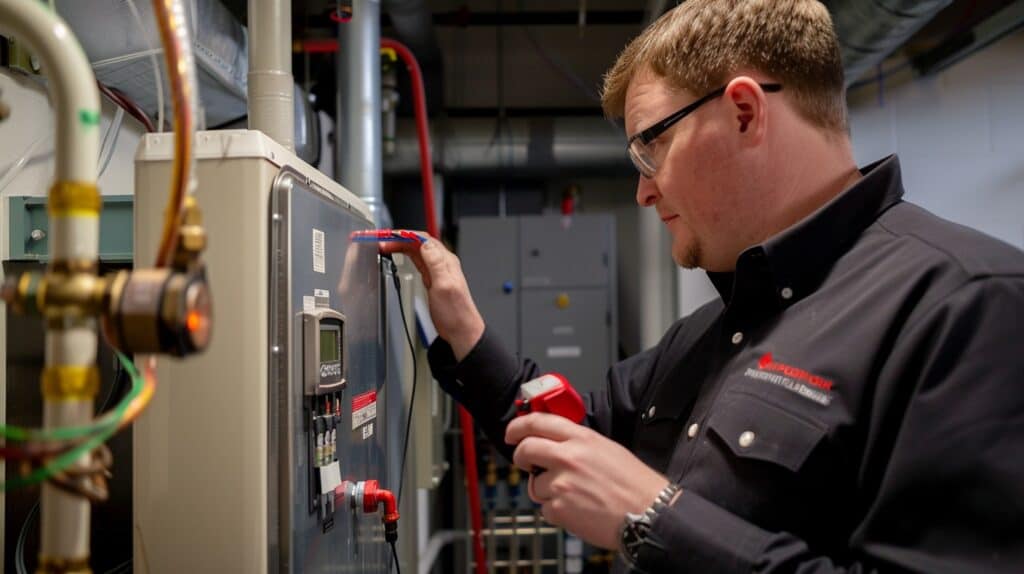
Checking your heat pump yourself? Start by finding the model number. Look close for a sticker or plate that tells you what it is. Then, hunt for an energy guide label—it’ll show you how good it uses power.
Verify the Model Number
Find the model number on your outdoor unit. Search this number online to learn if you have a heat pump. Look for tags outside the unit or inside, through the top grill. These tags tell you about your system.
The thermostat inside your home, the nameplate, and data tag also help identify it. Check these places carefully to know for sure what heating and cooling equipment you own.
Search for an Energy Guide Label
Look at the Energy Guide Label on your HVAC unit. This label tells you how much energy it uses and what it costs to run. It helps compare different appliances’ energy use. The cost shown is an average across the country. For units using less power, check for ENERGY STAR labels too. These show high-efficiency models that save money over time.
Next, inspect the refrigerant lines for any signs of wear or damage.
Check Refrigerant Lines Condition
Refrigerant lines play a big role in keeping your heat pump working right. Cold weather can make these lines work poorly. Make sure they are not damaged or leaking. This keeps your heat pump running well and stops problems before they start.
A damaged compressor or bad reversing valve affects refrigerant flow. Check these parts if you see issues with the lines. This step helps avoid bigger problems with heating and cooling at your home.
Taking care of these lines means less trouble later on for your HVAC system.
Conducting Functional Tests on Heat Pumps
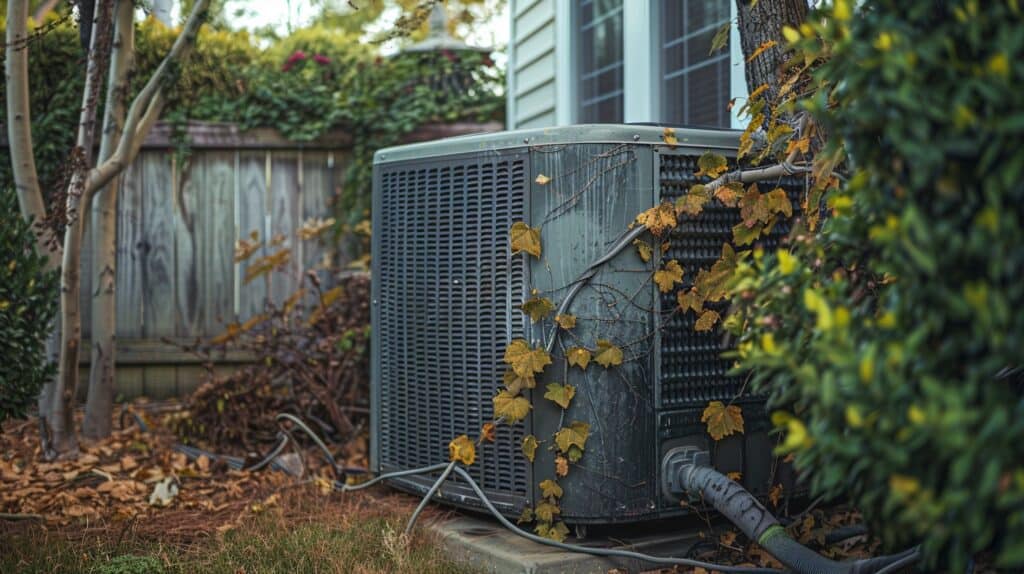
To really know if your heat pump works right, switch it on for both heating and cooling. Feel the air change—it’s that simple. See what happens as seasons shift; a well-working unit flips tasks smoothly.
Keep exploring to learn even more ways to check on your heat system.
Operate Heating and Cooling Modes
Switch your heat pump to cooling mode. Feel the air from vents. It should be cool. This proves it works as an air conditioner. Next, change it to heating mode. Warm air should replace cool air.
This shows your system can both heat and cool your home efficiently.
Heat pumps stand out because they reverse refrigerant flow for different seasons. In summer, they pull inside warmth out, cooling rooms down. When it gets cold, they switch direction, bringing outside warmth in to keep you cozy without using electric heaters or furnaces—this marks a big difference from regular air conditioners that only cool spaces down.
Detect Operation Reversal During Seasonal Change
After testing heating and cooling modes, the next step is to observe how your system reacts to seasonal changes. A heat pump switches roles depending on the weather, moving warmth inside during winter and pulling heat out of your home in summer.
You’ll know for sure it’s a heat pump if it keeps you warm in cold months and cool when it’s hot outside.
A true test of a heat pump is its ability to reverse operations with seasonal shifts—cooling in summer, heating in winter.
To spot operation reversal, monitor the outdoor unit as seasons change. In summer, the refrigerant collects heat from indoors and dumps it outside. Come winter, this process flips—the pump extracts warmth from outdoor air to heat your house.
Keep an eye on suction lines; temperature shifts confirm reversing action is underway. Checking solenoid coil health also helps—you need proper pressure difference and 24 volts at the reversing valve for correct function.
Seeking Professional Heat Pump Verification
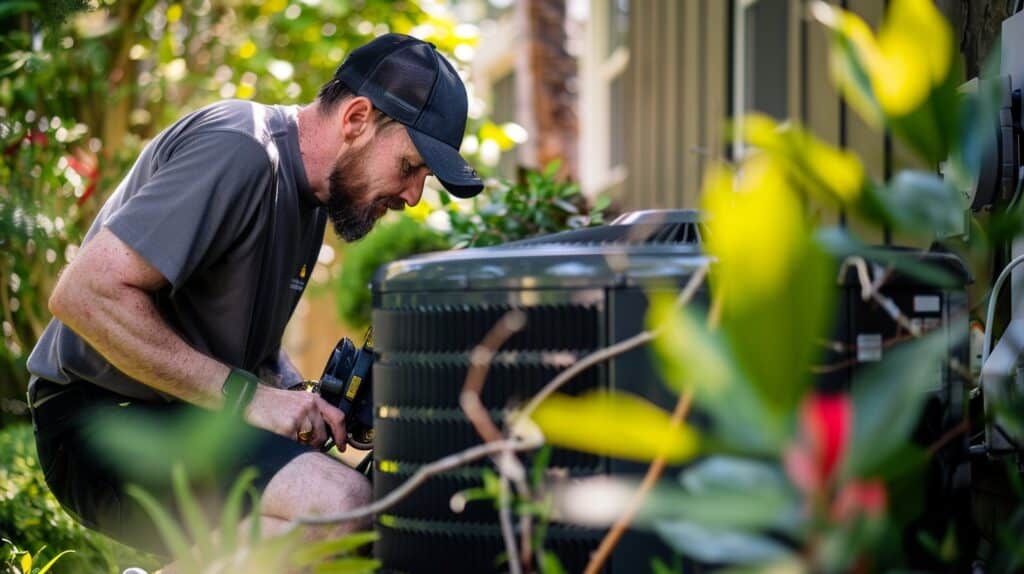
Talk to an HVAC pro… They know all about heating and cooling. They can look at your system, see how you use energy, and tell if you have a heat pump. Keep reading for more tips!
Consult with an HVAC Expert
An HVAC expert can check your system and find out what parts it has. This pro knows if your setup is right or if wires got mixed up. They use tools like smart thermostats, energy bills, and knowledge about heating, ventilation, and air conditioning to see how well your heat pump works.
David Butler advises not to worry about heat pump lockouts based on where you live.
If you’re unsure, this pro looks at things like the thermostat settings for auxiliary heat and the outdoor compressor’s traits. By analyzing energy bills, they spot heating and cooling trends that show if a heat pump is efficient or not.
They make sure everything’s set up correctly, avoiding costly mistakes.
Analyze Energy Bills for Heating and Cooling Patterns
Checking your energy bills can show if you have a heat pump. Look for patterns in how much heating and cooling cost. Heat pumps use less electricity, so bills might drop during warmer months compared to traditional heaters.
But, watch out for spikes in colder months. This could mean the heat pump uses its backup electric heater too much.
High flow temperatures on your bill also hint at overuse of electrical backup heaters. Efficient heat pumps should keep energy consumption steady across seasons. If you see big changes or high costs, it may signal issues with settings or design. Next, let’s compare heat pumps to conventional AC units to understand why choosing the right system matters for energy efficiency and performance.
Comparing Heat Pumps and Conventional AC Units
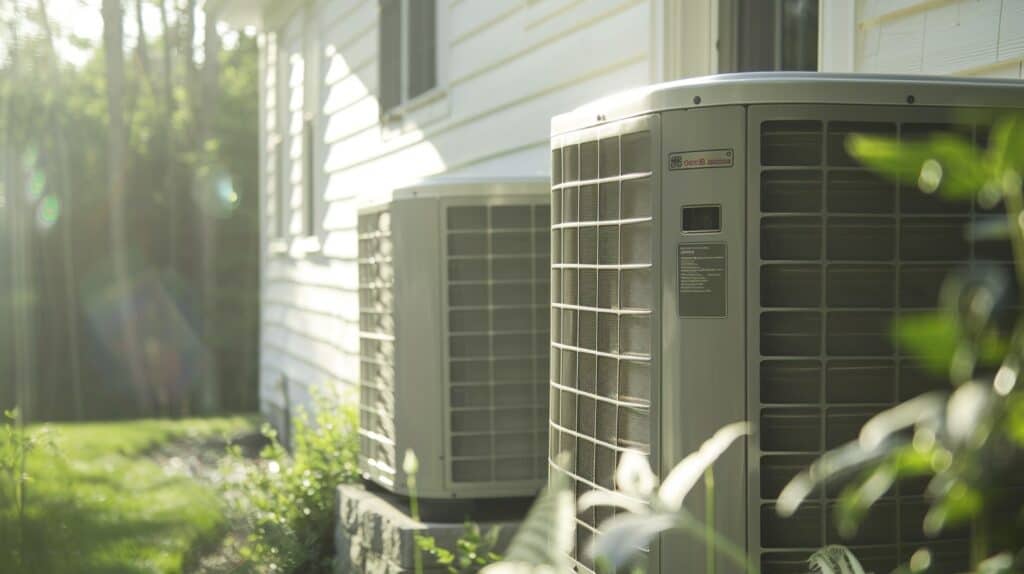
Seeing the difference between heat pumps and regular A/C is simple—they do both jobs, heating and cooling, and use less power. So, to learn which works best for you….
Assess Dual Heating and Cooling Capabilities
Heat pumps stand out by handling both warming and chilling your space. They shift warmth outside to cool your home during hot months. When it gets cold, they reverse this action to bring heat inside.
This switch is thanks to a device called a reversing valve, unique to heat pumps. You’ll know you have one if you can set your unit to either warm or cool your house with ease.
To truly test this feature, try running your system in both heating and cooling modes. Notice how the outdoor compressor kicks on no matter the setting? That’s because it’s working double-duty – moving heat in or out of your house depending on what you need.
Unlike traditional air conditioning units that only cool, these systems offer year-round comfort with efficient energy use. If switching between modes works smoothly and keeps indoor temperatures just right, then a heat pump is definitely what you have at home.
Evaluate Energy Efficiency and Performance
After looking at both heating and cooling abilities, it’s crucial to focus on how well these systems perform. Heat pumps stand out for their efficiency. They use less energy compared to traditional AC units. The SEER rating helps us see this clearly. A good SEER rating means the system works well without wasting much power.
Proper installation and regular maintenance are key to ensuring the superior performance of heat pumps.
Energy bills offer real proof. If your heat pump is set up and maintained right, you’ll notice lower costs in both summer and winter months, despite temperature swings. Extreme cold can reduce a heat pump’s effectiveness, but with proper care, it still beats the old heaters and coolers hands down.
People Also Ask
How can I tell if my home uses a heat pump for heating?
Look for an outdoor unit that looks like an air conditioner but works year-round, heating your home in the winter and cooling it in the summer. This is your air-source heat pump.
What are signs of a heat pump instead of a gas furnace?
If you don’t see any pipes leading to or from the unit that would carry natural gas or oil, it’s likely you have a heat pump. Gas furnaces need these pipes; heat pumps do not.
Can ductwork help identify if I have a heat pump?
Yes, both systems use ducts, but if you notice the system operates in both hot and cold seasons without switching equipment, it’s probably using an air handler connected to a heat pumping mechanism.
How does energy efficiency indicate I might have a heat pump?
Check the seasonal energy efficiency ratio (SEER) and heating season performance factor (HSPF) ratings on your system’s label—high numbers suggest you’re benefiting from an energy-efficient heat pump.
Are there specific parts of my system that show it’s definitely a heat pump?
Yes! Look for components like defrost timers and reversing valves—parts unique to heat pumps that manage defrosting cycles and switch between heating and cooling modes.
Does observing how my system deals with extreme weather help determine its type?
Indeed! Heat pumps often struggle with ice buildup during snowfall—they’ll enter defrost mode to melt this away efficiently, unlike traditional boilers or central heating systems, which don’t have this feature.
References
- https://aeroseal.com/air-duct-sealing-blog/how-do-i-know-if-i-have-a-heat-pump/
- https://georgebrazilhvac.com/blog/how-do-i-know-if-i-have-a-heat-pump-or-an-ac (2021-10-11)
- https://terrylove.com/forums/index.php?threads/how-to-determine-if-heat-pump-has-aux-emergency-backup-heat.93858/ (2021-04-16)
- https://gopaschal.com/what-is-aux-heat-on-my-thermostat/
- https://forum.nachi.org/t/heat-pump-identification/10142 (2006-11-30)
- https://consumer.ftc.gov/articles/how-use-energyguide-label-shop-home-appliances
- https://cielowigle.com/blog/heat-pump-troubleshooting/
- https://www.sciencedirect.com/science/article/pii/S1364032120305621
- https://www.youtube.com/watch?v=uRmjNcmdmm0
- https://hvacrschool.com/diagnosing-a-reversing-valve/ (2023-03-17)
- https://energyinformatics.springeropen.com/articles/10.1186/s42162-022-00250-3
- https://grovehvac.com/heat-pump-or-conventional-system/
- https://aquariushomeservices.com/heat-pump-efficiency/
- https://www.blocpower.io/posts/heat-pumps-vs-air-conditioners
